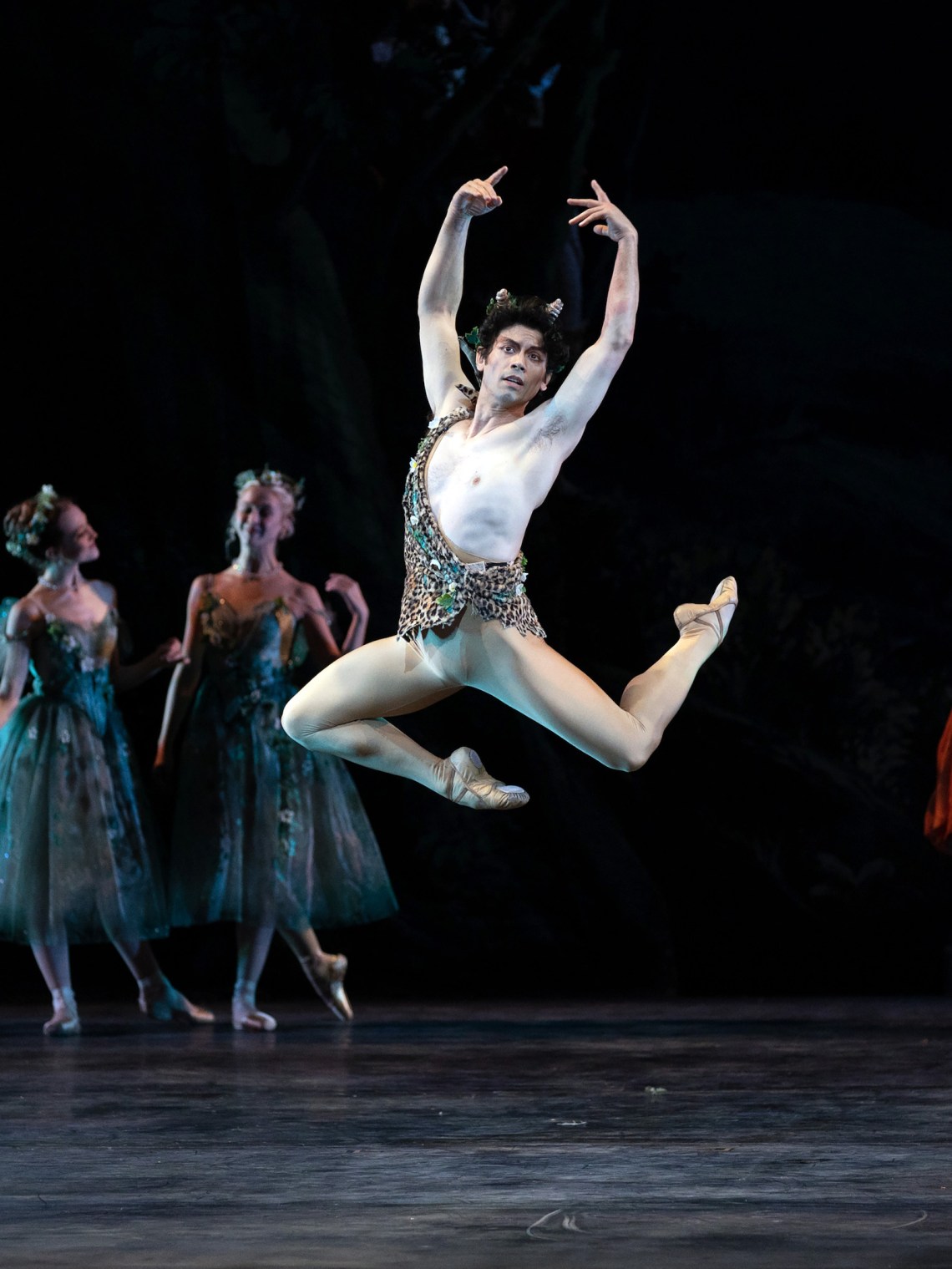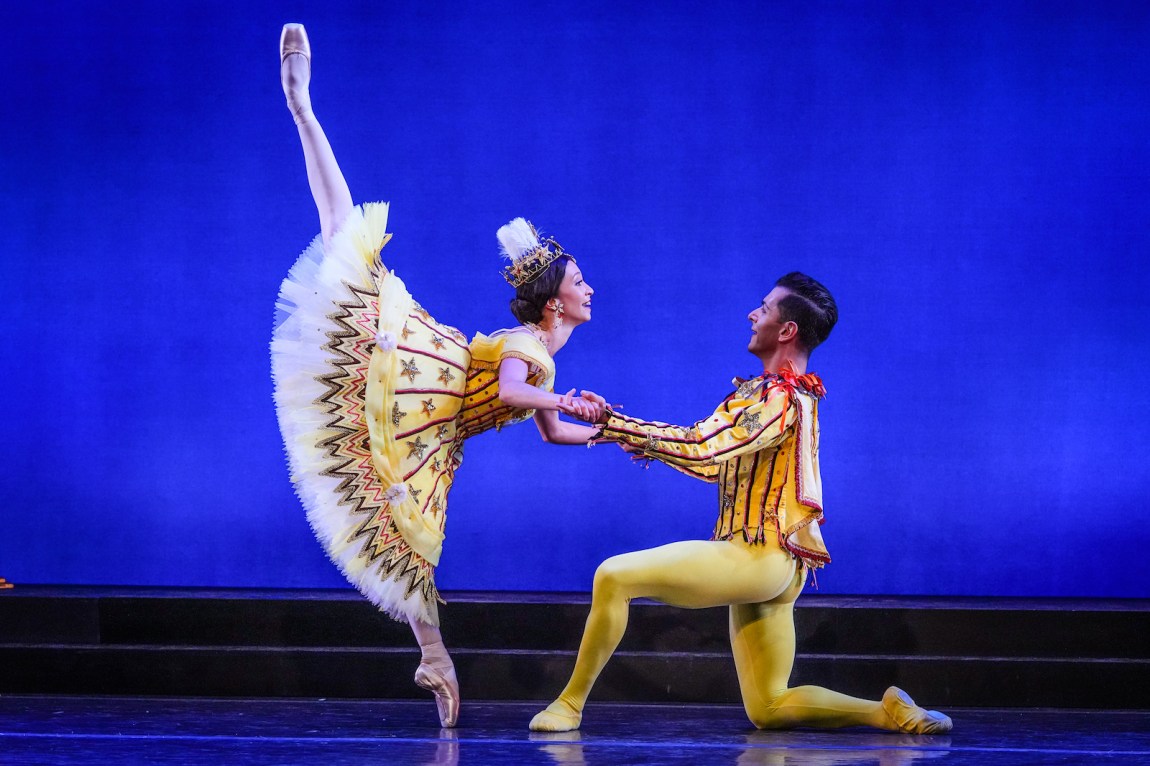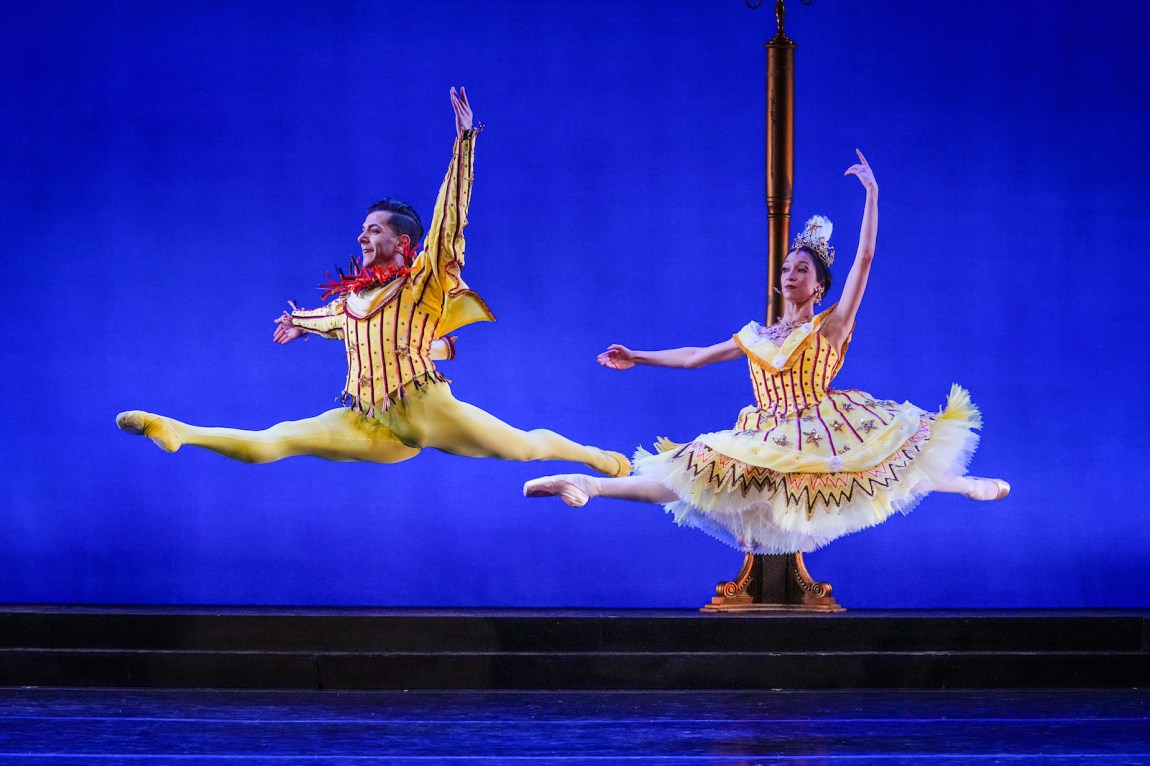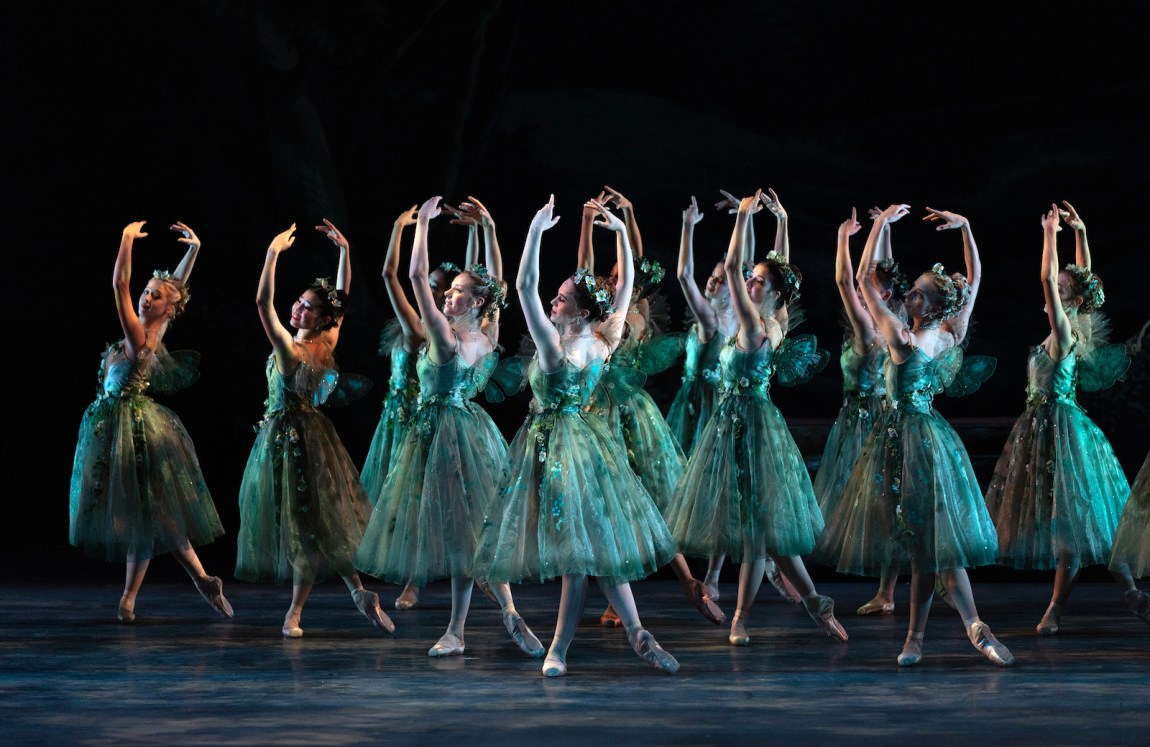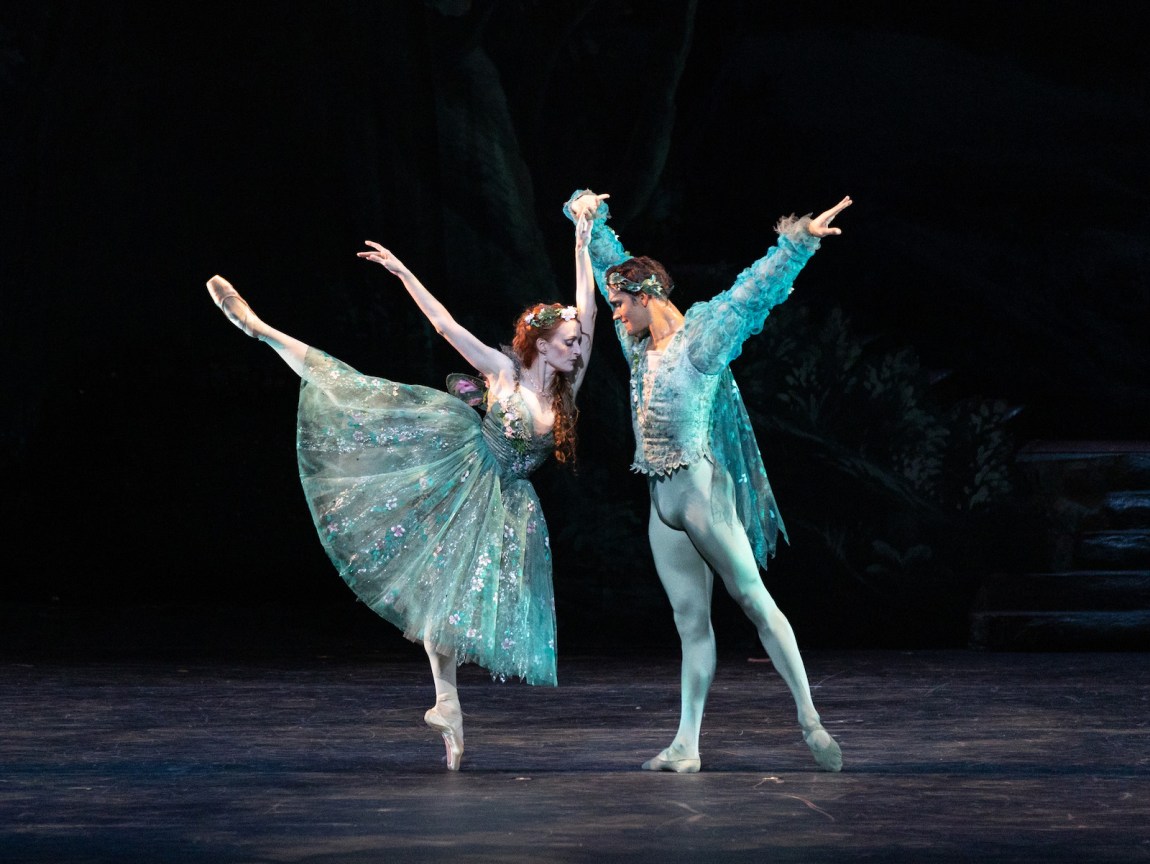Before beginning a new ballet, the English choreographer Frederick Ashton often visited the Brompton Oratory in London. Beneath the Catholic church’s ornate neoclassical domes, he would light a candle and kneel in a pew to pray. Considered a serious talent in the ballet world by the mid-twentieth century, Ashton—who wasn’t Catholic—used these spiritual excursions to soothe his anxieties about his work. “Every year, as I learn a little more about choreography, I expect more from myself,” he wrote in 1958. As his reputation grew, his audiences, too, expected more from him.
When he died in 1988 at eighty-three, Ashton had choreographed over a hundred works, many critically acclaimed at home and abroad, particularly in New York. Most were for the Royal Ballet, Britain’s leading national dance company, which Ashton directed from 1963 until 1970; in the 1930s he had been one of its founding choreographers. He also choreographed for international companies such as the Royal Danish Ballet and New York City Ballet, and for revues, operas, films, and television. Knighted in 1962, this witty, dapper, melancholic gentleman developed what critics and artists call an “English style” of ballet: genteel, restrained, and laden with connotations of class and national culture.
Since Ashton’s death, some critics, artists, and ballet-goers have argued that his creations aren’t revived often enough. It was thus a rare occasion when two American companies presented multiple Ashton ballets in New York this past season: in August, the Sarasota Ballet performed Birthday Offering (1956) at the Joyce Theater; in October, American Ballet Theatre (ABT) presented The Dream (1964) at Lincoln Center. Led by Royal Ballet alumni Iain Webb and Margaret Barbieri, the Floridian troupe has spent over a decade carefully restaging Ashton’s work. The larger ABT keeps his flame alive intermittently.
Both Birthday Offering and The Dream share a reverence for aristocratic, mythical worlds and the past, and both are haunted by imperial ghosts. Even Ashton predicted that his work, which some critics saw as traditional in its time, would lapse: sixty years ago, he told The Times, “I do not want the future cluttered up with old ballets; each generation should make its own.” But just as Anglophiles continue to gravitate toward Britain’s royal family, the glamor and classicism of Ashton’s English relics, regenerated by talented young dancers, can still captivate modern audiences. And with their fluid representations of gender and sexuality, his ballets chronicle how elite British culture has historically accommodated limited queer expression.
*
Ashton’s creative process usually started with the music. In a 1953 interview, he explained how he would “saturate” himself in the score he chose for a ballet, listening to recordings obsessively until he grasped its essence and “images begin to form in my mind.”1 This process went on all day and late into the night, when he would come home “slightly drunk” after an evening out and switch the record player on. Ashton’s interpretations of what he heard were intuitive—he had no formal musical training and couldn’t read a score. But he married personal understanding with technical rigor, using the music to devise specific structures—what he called “scaffolding”—that set courses of action for each section of a ballet.
For Birthday Offering, a piece d’occasion created for a gala honoring the twenty-fifth anniversary of the Sadler’s Wells Ballet (soon to be renamed the Royal Ballet) in 1956, the conductor Robert Irving arranged a score using music by the Russian Romantic composer Alexander Glazunov. These selections included parts of Glazunov’s suite Les Saisons (1899), whimsical expressions of nature that tied Birthday Offering to an exalted cultural past. The French choreographer Marius Petipa, whom Ashton revered, had choreographed a divertissement to this music for the Imperial Ballet of St. Petersburg in 1900; the Russian choreographer Michel Fokine, another inspiration, drew on the score in his Cléopâtre, performed by Serge Diaghilev’s Ballets Russes in Paris in 1909. The music also connected Ashton to his idol, the legendary Russian ballerina Anna Pavlova, who had performed in both Petipa and Fokine’s productions. Watching her onstage in 1917, his biographer Julie Kavanagh writes, the young Ashton more than admired her dancing—he “wanted to be Pavlova.”2
Entering the rehearsal studio, Ashton knew the music inside and out. Sometimes he came with ideas about what he wanted in a ballet, but he preferred to choreograph in the moment, without relying on prearranged movement phrases or written notes. As the accompanist played, he asked the dancers to improvise to the music, embody metaphors, and test their technique. Circling them as they moved, he adjusted and molded their limbs like, as the critic Clive Barnes put it, a “sculptor.” Assembling and editing, his choreography depended on the artistry and particular skills of the dancers in the room: “I ooze every bit of expression out of their bodies to convey what I want.” This organic method had its limits. For Barnes, Ashton’s work could end up “too closely tailored to the physique and temperament of its original cast.”3
Advertisement
First presented at London’s cavernous Royal Opera House, Birthday Offering begins with a festive overture. Transporting the production to the smaller Joyce Theater, Sarasota Ballet adds white drapes to frame the stage’s perimeter and pares down the work’s already sparse set—the number of candelabra that appear atop a low flight of stairs upstage, against a dark backdrop, are reduced from four to two. Unlike at the premiere, the music is recorded.
Seven ballerinas and their cavaliers parade onto the stage, waltzing regally in unison. We are meant to be at a high-society ball. The Sarasota dancers wear recreations of the original costumes, which had been designed by the French clothier André Levasseur, who worked for Christian Dior. (Levasseur’s proximity to haute couture fashion, international celebrity, and European royalty burnished Birthday Offering’s glamorous pageantry: weeks before Ashton’s production premiered, he designed a ballet for another company to perform at Grace Kelly and Prince Rainier’s wedding in Monaco.) “Before he designs anything,” the critic Peter Williams wrote about Levasseur, “he soaks himself in the music.” For Birthday Offering, he also studied garments worn by dancers at St. Petersburg’s Imperial Ballet. The women’s bodices and calf-length tutus are adorned with stripes, spots, and stars. The principal woman, a role originated by the star English ballerina Margot Fonteyn, stands out in yellow-gold. The men wear matching tunics with voluminous leg-of-mutton sleeves: a potential hazard for partnering sequences, during which they have to be careful not to knock the women’s crowns off their heads.
After a grand opening for the full ensemble, the dancers move through seven solo variations for the women, a group mazurka for the men, a culminating pas de deux for the principal pair, and a finale. This tight structure and the choreography itself—scrupulously technical and classical—follow Petipa’s style. There is no plot, but the ballet has a jubilant (if not exactly ecstatic) atmosphere. The choreography is packed with modest attitudes and arabesques, fast and tight beats and bourrées, supported pirouettes and buoyant tour jetés. The dancers wed intricate footwork with light, precise upper body gestures. Ashton gives his steps a curving softness and fresh, subtle flourishes, evident in the dancers’ frequently rounded arms, bending torsos, and quick turns and changes of direction. It’s highly presentational—dancers take formal bows at the end of each section—but not without cheeky moments, such as when, at the end of a difficult variation, a ballerina smiles coyly and shrugs her shoulders, bending her elbows and flexing her palms upward.
A vehicle for female dancers, the ballet outwardly conforms to traditional representations of gender: the men stand behind and support the women, displaying them like glittering jewels. The relationships between these princes and princesses—more sweet and cordial than passionate—deepen when one knows their subtext. Ashton had been romantically involved with three men in the first cast, and remained infatuated with the English dancer Michael Somes, Fonteyn’s cavalier. Douglas Blair Turnbaugh, along with other scholars, has explained that Ashton’s ballets are subtly coded with desire, reflecting “a gay man’s fantasy of being the goddess Pavlova, of being adored and lovingly partnered by a heterosexual man.” Fonteyn in particular became a figure for such projections.4
The Sarasota artists captured Birthday Offering’s pleasant mood and formal elegance, but their dancing could seem tentative, even subdued. I wanted them to tackle the movement more crisply and confidently—to really own it. Perhaps their approach was true to the “English” restraint of Ashton’s style. But because its challenging choreography was custom-made for a storied first cast, the ballet can also be a trial to perform. Its originators included not only Fonteyn but also several of the company’s principal ballerinas, and their complex solo variations fully expose the female dancers’ abilities. A few of the Sarasota dancers, such as Sierra Abelardo and Macarena Giménez, performed with aplomb, bringing real character and musicality to their roles. Others struggled through the steps, as if they were performing fixed sequences for an exam.
On opening night, Birthday Offering positioned the Sadler’s Wells Ballet as a national symbol. Queen Elizabeth II had been crowned in 1953 and Britain remained an imperial power, despite the recent independence of India, Myanmar, and Sri Lanka (decolonization would accelerate later that year, after the Suez Crisis). Alongside Fonteyn, luminous like the new Queen, the cast included several dancers from so-called “White Commonwealth” countries—in this case Australia, New Zealand, and South Africa. It was an aristocratic, racialized vision that turned a blind eye to the egalitarian aims of the postwar social democratic project, ongoing nonwhite immigration into Britain, and the cold war dynamics reshaping the country’s place in the world.
Advertisement
Warmly received at its premiere, Birthday Offering outlived its gala pretext. Ashton tinkered with it over the years; in the 1960s he added solos for the dancers David Blair and Rudolf Nureyev and edited Fonteyn’s variation. But as time passed, critics felt the ballet was wearing thin. For some, later casts never filled their predecessors’ shoes: even at the premiere, one critic debated whether the pas de deux would “ever be quite the same without Fonteyn.” By 1963 Williams claimed the ballet was becoming “a rather dim divertissement.” In 1970 Barnes wrote that, without its original ballerinas, “only the dances remain, carrying with them fugitive memories hanging around the roles like ghosts at a meager feast…a newcomer to ballet would, I think, be hard put to understand what all the fuss and praise was once about. Sad.”
*
In 1964, a year after he became director of the Royal Ballet, Ashton created The Dream in honor of Shakespeare’s quatercentenary. As he’d done with Birthday Offering, he looked back in time for inspiration. In particular, he drew on memories of staged versions of A Midsummer Night’s Dream and Henry Purcell’s opera adaptation, The Fairy Queen (1692), some of which he’d been involved in mounting. He asked the conductor John Lanchbery to arrange the music using the German Romantic composer Felix Mendelssohn’s various scores for A Midsummer Night’s Dream (1826/1842). To create the libretto, Ashton and Lanchbery read a brief prose adaptation of the play by Charles and Mary Lamb from their 1807 children’s book, Tales from Shakespeare. Compressing the play into a fifty-minute ballet, Ashton excised Theseus and Hippolyta, the backstories and weddings of the four lovers, and the antics of all the players except for Bottom. Freed from social tensions and the realities of everyday life, The Dream exists exclusively in the secret world of the magical forest and stars Shakespeare’s royal fairies: King Oberon and Queen Titania.
Crowded with naturalistic trees, leaves, and an earthy bower for Titania’s bed, the backdrop evokes Ashton’s love of the English countryside. A full moon, painted almost orange, hovers in the distance. The female fairies’ long Romantic tutus—which in other productions include gray, brown, purple, and yellow hues—are in ABT’s production a wash of lush greens and blues.
The ballet opens with Titania’s army of female fairy attendants crisscrossing the stage, their arms rippling like waves as they patter and hop in time with the music. Like their tutus, their delicate wings and daisy-chain crowns nod to the past, evoking the style of nineteenth-century ballets by Petipa, Jules Perrot, and August Bournonville. Their fluttering is disrupted when Oberon enters.
Oberon’s costume immediately reminded me of Vaslav Nijinksy’s in Le Spectre de la rose (1911). Performing with the Ballets Russes, Nijinsky wore a pink unitard that, adorned with rose petals and highlighting his bulging leg muscles, transcended gender conventions and made him an icon for male and female admirers.5 Oberon’s svelte costume is turquoise and green, embellished with wild, tattered leaves and flowers and a shimmering, netted cape. Reconciling commanding and sensitive qualities, his choreography is equally androgynous. Female dancers are more often ballet’s stars, but The Dream is the fairy king’s show—he constantly watches and controls the action on stage, using Puck to do his bidding. Daniel Camargo sparkled in the role.
Ashton organized the ballet around the king and queen’s mimed fight over the Changeling Boy and their pas de deux détente. The role was originally called “Changeling Indian Boy,” following Puck’s description of him, in Shakespeare’s play, as “a lovely boy stolen from an Indian king.” Even in The Dream’s supernatural world, kings and queens don’t fail to have imperial subjects. Although ABT cuts “Indian” from the role’s name, removing its overt invocation of British imperialism, there is a lingering nod to this ethnic marker in the boy’s costume: an emerald-green, turban-like hat. Sparring over the boy, Titania and Oberon mirror each other’s smooth arabesques and pull him back and forth until he falls over. The fairy queen wins the battle. Like the powerful Queen Myrtha in the ballet Giselle (1841), she leads her entourage offstage, her hands protectively gripping the boy’s shoulders and her head raised high as she executes a series of defiant scissor-like kicks.
In 1987 the BBC filmed Ashton—then over eighty—rehearsing the ballet’s climactic pas de deux with the English dancers Antoinette Sibley and Anthony Dowell, his original Titania and Oberon, who were by then in their forties. Ashton holds a cigarette throughout the run-through, trailing smoke as he prods and adjusts the dancers’ arms and shoulders with his free hand and hums along with the music. For Titania, he tells the camera, he wanted a “farouche character.” Sibley, who premiered the role as a young dancer (she and Dowell later became two of the Royal Ballet’s major stars), recently told the filmmaker Lynne Wake that she found Titania’s choreography full-bodied, freeing, and “very sensual.” Dowell recalled how, in various solos for Oberon, Ashton tapped into his unique “facility for turning”—another vehicle for displaying and foregrounding the male dancer.
As Oberon and Titania in ABT’s production, Camargo and Gillian Murphy, one of the company’s longstanding principals, brought out the duet’s playful, meditative qualities; Murphy beautifully preserved the limp wrists and bent elbows that I watched Ashton demonstrate for Sibley in the 1987 film. Although Oberon manipulates Titania through rotating penchés and other supported sequences, many of their movements are symmetrical, and there are few acrobatic lifts in the air—hallmarks of more overtly erotic pas de deux created by Ashton’s contemporaries Kenneth MacMillan and George Balanchine. While Titania moves with increasing abandon, the partnership never seems hypersexual; it’s always tempered by gentle, wholesome moments of unison, such as when the pair walk slowly side-by-side.
As he worked, Ashton fixated on the clarity of the mime sequences, story, and characters. In his authoritative 1977 biography, David Vaughan reports that the choreographer brought outsiders into the studio and asked if they understood what was happening.6 Another of his male fairies, Puck, is given fast, quirky, and exuberant movement. Herman Cornejo brought energy and style to the role’s detailed miming, endless turns, and stag-like leaps. I was fascinated to see him repeat the gestures of some of the ballerinas in Birthday Offering: shrugged shoulders, bent elbows, and flexed palms, now transported from female aristocrat to male sprite. Bottom, excellently danced by Tyler Maloney, first appears alongside the cartwheeling, marionette-like players. Transformed into a donkey with a large mask, he teeters across the stage in black pointe shoes. Putting a man on stage in pointe shoes in 1964 was unconventional, almost radical. Bottom’s clumsiness—he claws and clomps heavily to the music, headbutts Titania, and scratches himself against a tree—gives that deviance a comic cover.
The Dream received tepid reviews when it premiered. Observing its Victorian aesthetic, the critic James Kennedy called the ballet “deft, conventionalised,” and unimaginative, leaving one with “the prevailing feeling…of slight disappointment.” Still, it endured. The Dream is now one of the few Ashton works that companies around the world regularly perform. ABT’s dancers make it vigorous and warm, bringing their superb technique and artistry to Ashton’s choreography. The ballet’s luscious fantasies, transgressions, and harmonious ending offer a comforting diversion no matter when it’s performed.
*
Birthday Offering premiered three days before the playwright John Osborne’s Look Back in Anger opened at the Royal Court Theater in the West End. A milestone of “kitchen sink realism” with a frustrated, working-class hero, the play steered British drama away from Edwardian drawing rooms and into downtrodden homes far from elite London. It inspired British writers and filmmakers to turn to naturalist forms; critique class inequities, social conventions, and consumerism; and stage male pessimism. In dance, young choreographers such as MacMillan and Peter Darrell began pushing ballet toward realism, creating work that plumbed dark themes: MacMillan’s The Invitation (1960), for instance, depicted a rape at a bourgeois Edwardian house in a “warm country” (perhaps a British colony). The 1960s brought new preoccupations: youth, rebellion, rock music, and the questioning of traditional authority. As decolonization sped up, images of imperial grandeur seemed increasingly delusional.
But Ashton still turned to the art and social ideals of earlier eras. Like Birthday Offering, The Dream projects tradition and deference, sweetness and magic. The choreography, costumes, and sets can seem fussy, artificial, divorced from contemporary concerns. The fluid representations of gender and sexuality in his ballets aren’t openly activist—they’re shrouded in ambiguities and couched in ethereal, privileged settings. (That homosexuality wasn’t decriminalized in Britain until 1967 made more overt expression unthinkable.)
In the 1970s, when MacMillan became director of the Royal Ballet, Ashton retreated to his Suffolk home and the highest echelons of British society. Queen Elizabeth the Queen Mother, a ballet devotee, began inviting him to parties and weekends at Royal Lodge and Sandringham House. There, he sat next to her playing games, danced the tango, and performed his famous impersonations. Some of his final ballets were tributes to the royal family. “He had an acute sense of the ridiculous and he told stories with great charm and point,” Isaiah Berlin said of Ashton’s partygoing. “He sang for his supper and I think he knew this. But he enjoyed the supper very much.”
Despite his achievements, Ashton often spoke ambivalently about the fate of his life’s work. He told interviewers that his ballets were destined to lose their original style over time and that younger generations should focus on making new art. He showed little interest in dance notation systems for recording choreography and never established a trust that would ensure his ballets continued to be performed after he died. (The Frederick Ashton Foundation was established in 2004.) Compared to Balanchine, his towering counterpart in New York, he donated his ballets to far-flung companies relatively rarely; while directing the Royal Ballet, he programmed few of his own works.
Given dance’s fleeting nature, this approach was pragmatic. It also reflected characteristic self-deprecation and a deep passion for the immediate creative process. In 1961 Ashton told The Times that he hated restaging his old works: “Making a ballet is like a love-affair; reviving one is too cold and calculated; the drive has gone. Anyway, I forget.” But he did leave the care of his ballets to a few members of his closest circle, implying that he believed they could be reconstructed after his death—and might even last. As the capacity theaters I sat in suggested, these works still draw in audiences who want to see choreography by an English “old master” and escape into his nostalgic, fantastical worlds.


